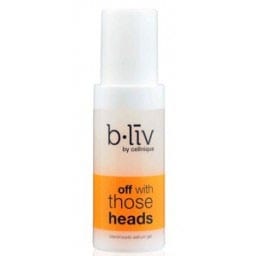Ahhhh. The joys of adult acne! One of the most confidence sapping things that seems totally out of your control, but can actually be managed.
If you’re prone to it, here’s what you need to know, and 3 products that you can use to help avoid it.
Adult acne falls into one of two categories.
It can either be acne that is persistent, and sticks with your skin when you transition from your teen years into adulthood, or, acne that begins in your mid-twenties right up until your forties. Either way, it’s not fun.
This acne can, and most commonly does, crop up around the chin, mouth and jawline, or along the forehead. Hormonal changes play a big part in causing adult acne. Going off the pill, ovulation cycles, and pregnancy can all have a negative effect on the skin when adult acne is concerned. Stress can also cause hormone levels to fluctuate and in turn, cause ‘bad’ skin, as can certain medical conditions, that directly impact hormone levels. Other factors will impact on your acne too – diet, and weight have also been said to directly impact on occurrence of adult acne.
Often, excessive sebum (oil) production in the skin is the physical manifestation of these hormonal changes, and the immediate cause to blame. This excess oil, combined with dead skin cells, clog pores and tiny hair follicles (which are all over the body) which lead to blackheads, whiteheads and pimples. They can be blind (bumps without a white ‘head’) or your classic, nasty blemish or pimple, that just begs to be squeezed.
So, how can you help treat it? With these three products.
Exfoliants
Not the scrubby, grainy kind – the chemical kind. These aren’t rough and scratchy on the skin, but instead help to dissolve away dead skin cells that block skin around acne prone areas, and leave your skin looking a little dull everywhere else. Try a toner-like exfoliant (a liquid, applied with a cotton pad) like my favourite, the AlphaH Liquid Gold. It contains high levels of glycolic acid for clinical strength effect. For oily skinned girls, try 3 nights a week to start with. You may be able to build up to every second night, but take it easy. These are strong on skin, so you shouldn’t go overboard – everything in moderation. Use right after cleansing, before bed, and don’t follow with any other product. Just let it do it’s thing. Best of all, it’ll also help to fade acne ‘scarring’ or those little red marks left over from previous spots.
Spot treatments
Spot treatments are creams are a great way to isolate your acne, and not have to involve your whole face. For instance, your chin might suffer, but you shouldn’t need to apply anti-acne prods to your cheeks if they are fine. The b.liv by cellnique off with those heads is very popular for helping avoid blockages, before they turn into pimples.
Just like anti-aging products, prevention is better than curing when it comes to acne. If you know you’re prone to it, it’s better to keep skin in check with constant maintenance thanks to spot treatments, rather than fighting a nasty pimple once it literally rears its ugly head.
Non-foaming cleansers
Another key product to keep acne in check is a non-foaming cleanser. Obviously, washing your skin and keeping it clean is key. Makeup, sunscreen, sebum and daily grime all build up to create nasty blockages, ripe for turning into pimples. But rather than washing with a harsh, foaming cleanser, reach for a gentler one instead. Foaming cleansers may feel like they are really cleaning your skin, but if you strip all the oil away, and end up with that tight feeling post-cleanse, you’ve probably removed all the natural sebum in your skin. For oily prone gals, this means your skin will simply go into over drive and produce even more than before! Not what you want.
For a gentle cleanser that still does its job, try the Gatineau Serenite Cleansing Milk.
And remember, if all of these additional skincare tips are ineffective after 12 weeks (this will cover the ‘cycle’ or your skin, taking into consideration your monthly hormonal cycle – which will invariably leave skin better or worse, depending on ‘that time of the month’), go to a GP. They may prescribe some skin medication, or give you a referral to a dermatologist. You could be prescribed topical creams, gel medication or oral antibiotics. These will most likely be retinoids – medicines that contain vitamin A. They can be highly effective, but will leave your skin sensitive to the sun, so remember your SPF.




